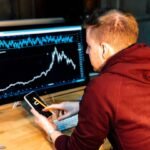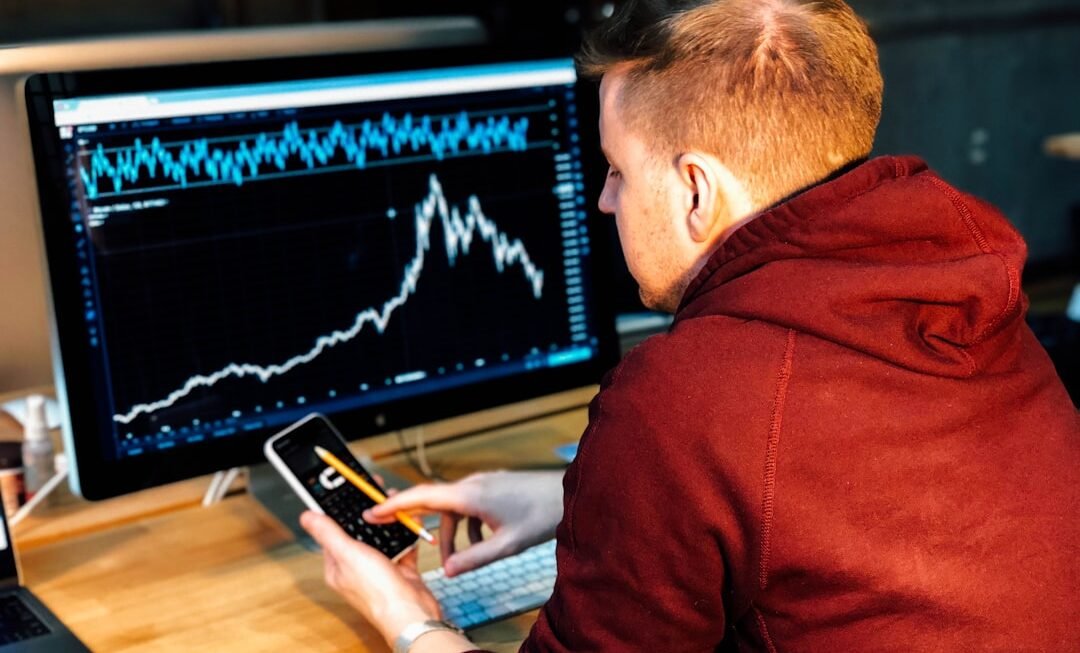The landscape of trading has undergone a seismic shift with the advent of artificial intelligence (AI). Once dominated by human intuition and experience, the trading floor is now increasingly populated by algorithms and machine learning models that can analyze vast amounts of data in real time. This transformation raises critical questions about the roles of human traders and AI systems in financial markets.
While human traders bring emotional intelligence, contextual understanding, and adaptability to the table, AI systems offer unparalleled speed, efficiency, and the ability to process complex datasets. The juxtaposition of these two entities creates a dynamic environment where both can coexist, yet also compete for dominance. As we delve deeper into the intricacies of trading, it becomes evident that the strengths and weaknesses of AI and human traders are not merely a matter of preference but are rooted in their fundamental operational methodologies.
Human traders rely on their instincts, market knowledge, and emotional responses to make decisions, while AI systems leverage algorithms and data analytics to execute trades with precision. This article will explore various dimensions of this comparison, including speed, precision, emotional factors, ethical considerations, and the future trajectory of trading in an AI-dominated world.
Key Takeaways
- AI and human traders each have their own strengths and weaknesses in the online trading world.
- AI traders have the advantage of speed, being able to execute trades at a much faster rate than human traders.
- While AI traders are precise and accurate in executing trades, human traders can bring intuition and emotional intelligence to the table.
- The future of online trading will be heavily impacted by AI, but human traders will still play a significant role in the market.
- Human traders face challenges in keeping up with the speed and precision of AI, but their emotional intelligence and intuition remain valuable assets.
One of the most significant advantages that AI holds over human traders is speed. In the fast-paced world of trading, milliseconds can mean the difference between profit and loss. AI algorithms can process vast amounts of market data in real time, executing trades at speeds that are simply unattainable for human traders.
For instance, high-frequency trading (HFT) firms utilize sophisticated algorithms to capitalize on minute price discrepancies across different markets. These algorithms can execute thousands of trades per second, taking advantage of fleeting opportunities that a human trader would likely miss. Moreover, AI systems can continuously monitor multiple markets simultaneously, analyzing trends and patterns that may not be immediately apparent to human eyes.
This capability allows them to react to market changes almost instantaneously. For example, during periods of high volatility, such as economic announcements or geopolitical events, AI can adjust trading strategies in real time based on incoming data. In contrast, human traders may take longer to assess the situation, leading to missed opportunities or delayed reactions that could result in significant financial losses.
When it comes to precision in trading decisions, AI systems have a distinct edge due to their reliance on data-driven algorithms. These algorithms are designed to minimize errors by analyzing historical data and identifying patterns that inform future trades. For instance, machine learning models can be trained on years of market data to predict price movements with remarkable accuracy.
This level of precision is particularly beneficial in quantitative trading strategies where statistical analysis plays a crucial role. On the other hand, human traders often rely on qualitative assessments and subjective judgment, which can introduce biases into their decision-making processes. While experienced traders may have a keen sense of market sentiment or an intuitive grasp of economic indicators, these insights can be clouded by emotions or cognitive biases such as overconfidence or loss aversion.
For example, a trader might hold onto a losing position longer than advisable due to an emotional attachment to the stock or a belief that it will rebound. In contrast, AI systems operate without such emotional influences, making decisions based solely on data and predefined parameters.
The Future of Online Trading: AI’s Impact
The integration of AI into online trading platforms is reshaping the future of financial markets. As technology continues to advance, we can expect AI to play an increasingly prominent role in trading strategies across various asset classes. Retail investors are already benefiting from AI-driven tools that provide insights and recommendations based on real-time data analysis.
For instance, robo-advisors use algorithms to create personalized investment portfolios for clients based on their risk tolerance and financial goals. Furthermore, as AI technology evolves, we may witness the emergence of more sophisticated trading strategies that combine both human intuition and machine learning capabilities. Hybrid models could leverage the strengths of both entities, allowing human traders to make informed decisions while benefiting from the speed and precision of AI systems.
This collaboration could lead to more efficient markets and improved investment outcomes for both institutional and retail investors.
Challenges Faced by Human Traders in the Age of AI
As AI continues to dominate the trading landscape, human traders face several challenges that threaten their traditional roles. One significant challenge is the increasing reliance on algorithmic trading strategies by institutional investors. As these firms deploy advanced AI systems capable of executing trades at lightning speed, individual traders may find it increasingly difficult to compete.
The sheer volume of trades executed by AI can create a market environment where human traders struggle to find profitable opportunities. Additionally, the rise of AI in trading has led to a shift in market dynamics. With algorithms driving much of the trading volume, traditional indicators and patterns may become less reliable as they are influenced by machine-driven behavior rather than human sentiment.
This shift necessitates that human traders adapt their strategies and develop new skills to remain relevant in an evolving market landscape.
Emotions play a pivotal role in trading decisions made by humans. Factors such as fear, greed, and anxiety can significantly influence a trader’s actions, often leading to irrational decisions that deviate from sound investment principles. For instance, during a market downturn, fear may prompt a trader to sell off assets prematurely, locking in losses rather than allowing for potential recovery.
Conversely, during a bull market, greed may lead to overexposure in high-risk assets without adequate risk management. In stark contrast, AI systems operate devoid of emotions. Their decision-making processes are based solely on data analysis and algorithmic rules rather than psychological factors.
This lack of emotional influence allows AI to maintain discipline in executing trading strategies consistently. For example, an AI algorithm programmed to follow a specific risk management strategy will adhere to its parameters regardless of market sentiment or external pressures. This objectivity can lead to more consistent performance over time compared to human traders who may succumb to emotional impulses.
Ethical Considerations in AI Trading
The rise of AI in trading also brings forth ethical considerations that warrant careful examination. One major concern is the potential for market manipulation through algorithmic trading practices. High-frequency trading firms have faced scrutiny for engaging in practices such as quote stuffing or layering—strategies designed to create artificial market conditions that can mislead other traders.
Such actions raise questions about fairness and transparency in financial markets. Moreover, the increasing reliance on AI raises concerns about accountability when things go wrong. If an algorithm makes a poor trading decision resulting in significant losses or market disruption, determining responsibility becomes complex.
Is it the developers who created the algorithm, the firms that deployed it, or the regulatory bodies overseeing its use? Establishing clear guidelines and ethical standards for AI-driven trading practices is essential to ensure that technology serves as a tool for enhancing market efficiency rather than undermining its integrity.
The Coexistence of AI and Human Traders
As we navigate the evolving landscape of trading shaped by artificial intelligence, it becomes clear that both AI systems and human traders have unique strengths that can complement each other. While AI excels in speed and precision through data-driven analysis, human traders bring invaluable qualities such as emotional intelligence and contextual understanding. The future of trading may not be a zero-sum game where one entity completely replaces the other; rather, it could be characterized by collaboration where both parties leverage their strengths.
In this coexistence model, human traders can focus on strategic decision-making and relationship-building while utilizing AI tools for data analysis and execution efficiency. As technology continues to advance, fostering an environment where both AI and human traders thrive will be crucial for creating resilient financial markets capable of adapting to future challenges. The journey ahead promises exciting developments as we explore the synergies between human intuition and machine intelligence in the world of trading.












